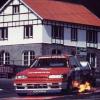Announcements
-
Similar Content
-
Latest Posts
-
I would rather buy from aliexpress than whatever that "shop" is. Avoid like the plague.
-
Sounds like, to me, if you do some geometry calculations, you can fit a hoist in there
-
New dampening settings are much nicer or crappy roads, I've also noticed no difference when throwing the car around on smooth twisty roads In other news: Idle hands are the devils play things, or, more correctly, my typical while we're in there 5hit, and too much time on my hands with online shopping Some new purchases for the 2.5 swap Fancy pants new 32mm triple flow radiator, because the old radiator is old and needs to come out for the 2.5 swap anyway Gates fancy pants water pump, because recommended with the new radiator Plus a new silicone coolant hose kit, because old hoses are old And a sump baffle thingo, because while I won't track the MX5, I'll probably track the MX5, maybe, probably......but, while we're in there anyway, as the FWD 2.5 sump needs to gets replaced with the RWD 2.0 sump, so, yeah I am loving driving the MX5 around everywhere, the poor old Bogan Cruise Ship hasn't really moved in months



Recommended Posts
Create an account or sign in to comment
You need to be a member in order to leave a comment
Create an account
Sign up for a new account in our community. It's easy!
Register a new accountSign in
Already have an account? Sign in here.
Sign In Now